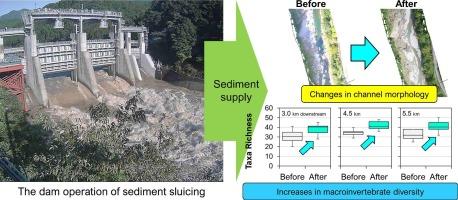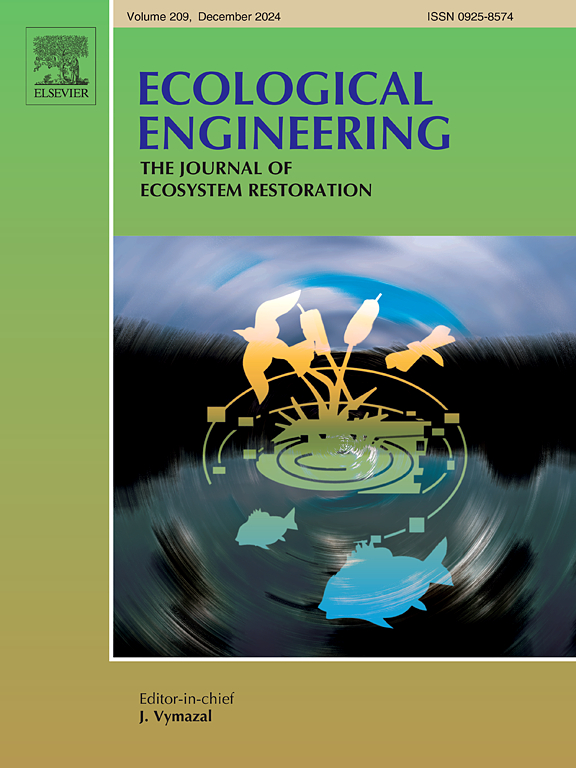Restoration effects of sediment supply by sediment sluicing dam operations on macroinvertebrate assemblages in the Mimi River, Japan
Abstract
Sediment supply downstream of dams through control techniques of reservoir sedimentation is attracting attention for promoting both sustainable water use and river ecosystem restoration. Sediment sluicing is a sediment control technique expected to recover natural sediment regimes because it allows sediment from an upstream reservoir to pass through a downstream dam during high flows. However, only a few studies have evaluated the restorative effects of sediment sluicing. We evaluated the restoration effects of sediment sluicing on macroinvertebrate assemblages in a dammed river using a before–after control–impact design. After sediment sluicing operations, the taxa richness of macroinvertebrates increased at sites downstream of the dam under free-flow conditions, where the reservoir was completely lotic and large amounts of sediment were transported. Meanwhile, there were few changes in macroinvertebrate richness and composition at sites downstream of the dam without sluicing operations and at the dam where sluicing was operational but did not achieve free flow. The increase in taxa richness was probably due to sediment supply from sluicing operations. As most taxa that increased in response to sluicing operations were grazers, sediment supply could provide benefits through indirect impacts via food resources. Negative impacts were observed on macroinvertebrates because of the first flush of excess sediment supply during the first sluicing; however, the extent of impact was spatiotemporally limited. Sluicing operation would be better than other sediment control techniques. This study suggests that sediment sluicing is an effective restoration method for not only macroinvertebrate assemblages but also for ecosystem functions.


 求助内容:
求助内容: 应助结果提醒方式:
应助结果提醒方式:


